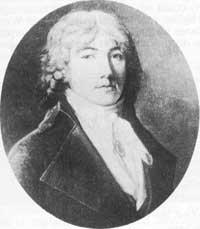Jean Baptiste Biot
Elhuyar Fundazioa
This French physicist joined the world of Paris on 24 April 1774. After his studies, in 1797 he was appointed professor at the school of Beauvais and in 1800, under Laplace, professor of physics at the “Collège de France”.
In 1803 he claimed to have seen the matter fall from the sky and had to convince the scientists at the time that there were meteorites.
In 1804, on a balloon, he himself and full of tools Gay-Lussac, studied the high layers of the atmosphere (between 1.5 and 5 km). They measured the composition of the atmosphere and saw that the Earth's magnetic field varies very little depending on the height.
In 1806 Biot and Arago traveled to Spain to measure the meridians. They became friends and the friendship lasted about ten years until Thomas Young resurrected the wave theory of light. At first Arago and Biot supported the ancient Puzzana theory. Biot also invented a special mathematical reasoning that Laplace liked. However, Aragon followed the path of wave theory and ended the friendship between two friends.

Biot also dealt with the speed of sound propagation in solids, preparing for it a mathematical theory in 1809.
In 1820, Biot, accompanied by Savart, measured the magnetic field that generates the electric current through a direct conductor and made known its law, so important in electromagnetism and known as Biot-Savart law.
Another of Biot's great discoveries was that of polarized light. The phenomenon of double refraction and the characteristics of the two rays of light coming out of Icelandic space were known. This phenomenon could be explained about the theory of light waves, as demonstrated by Fresnel, but although Biot did not accept it, it obtained interesting results in the field of polarized light. In fact, in 1815, he saw that organic substances (liquid or dissolving, such as sugar solutions) turned polarized light clockwise or otherwise. He also suggested that this deviation was due to the internal asymmetry of the molecules.
He was also responsible for the dissolutions of biot sugars and similar organic substances and saccharometers.
During his long life he explained many phenomena of physics and, although in some theories he was wrong, he had many successful results.
He died in his hometown of Paris on 3 February 1862.





